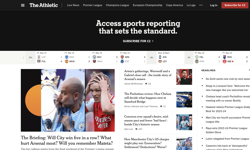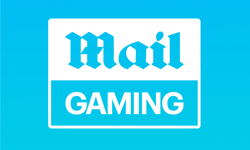Next time you sit on a plane or a train, does it bother you that the person sitting next to you may have paid double (or half) the price you paid for the journey? Probably not; we all accept the standard marketing principle that it is beneficial to all parties if markets can be segmented without any one customer group feeling unjustly treated. The business traveller who bought their ticket an hour before the flight is happy to pay a high price. The leisure traveller who pays six weeks in advance would not travel if the cost were twice as high; so both are happy. In this article, I hope to give a few ideas on how this strategy should inform content pricing. The aim is of course to maximise total site revenue. Of the many points at which content can be charged for, I consider here two categories of purchaser: the end user of the content, and the intermediary, who pays for the content to appear.
The customer as end user
Publishing on the web expands the range of pricing you can offer. At the lower end, it is possible to offer content for as little as a pound or two, a transaction that would not be worthwhile if carried out manually. Companies House (www.companieshouse.gov.uk) is a good example of a low payment site. It combines basic free information, providing company name and address, with paid information, such as annual accounts, for as little as £1. This is offered alongside a monthly subscription of £5 for unlimited downloads.
For some content, it is not always appropriate or easy to create a transaction site (for example, a dictionary of technical terms, where the time to complete the transaction would be disproportionately high compared to the value of the information). Nevertheless, you can still be paid: in this case, you can deliver your content through a third party aggregator, who makes the payment on behalf of the end user such as a student retrieving education content in UK universities, and it is surprising where funds can be obtained for this kind of transaction. For example, many public libraries now provide paid content, such as Who’s Who, or Whitaker’s Almanack, free of charge to end users. The cost is paid by the library, which use a part of their book-buying budget to cover the cost. Libraries are holding increasing amounts of business content in this form.
It is even possible to charge for free content! This is achieved, for example, by companies that provide additional searching filters for access to EU tender information. Although by law required to be freely accessible, EU tenders are notoriously difficult to retrieve. There are many categories, a vast number of tenders, and it is difficult to keep track of which tenders are available at any specific date. So a business has sprung up for commercial providers to offer saved searches, better classification, and to keep you provided with information on a more customised basis. A service such as Tenders Direct (www.tendersdirect.co.uk) charges £750 per year to subscribers to access free information – a remarkable (but clearly successful) pricing strategy.
The customer as intermediary
In many businesses, while the content remains free at the point of use, it is the advertisers themselves – the intermediaries – who pay for the information to appear. The resource may be free, but advertisers may still pay to gain extra functionality and greater prominence on the site. Free content will almost certainly be available from several sources, so the channel provider (a directory publisher, for example) looks to add additional value to the site, by offering benefits such as simpler searching; in addition, advertisers seek to make the most of the customer who has arrived at the site looking for, say, a PC supplier, to be told that this supplier also provides maintenance and technical support services for all PC users. As the owner of the channel, the publisher can charge for this additional linking.
Strategies for pricing to the intermediary include:
1. Make the transaction simple and immediate. If the site includes a credit card capability and a clear statement of charges, then the customer remains in control throughout the process. Aldous Huxley in Brave New World memorably described a utopia in which the time is reduced between identifying a desire and its fulfilment, and this principle applies perfectly to web transactions – they are immediate. Once the purchasing decision has been taken, the delay before the transaction is completed is down to a few seconds, as long as the site is sufficiently well designed to make the transaction straightforward and transparent.
2. If there is a single price, offer in addition a subscription version. This model works for intermediaries as well. Create, for example, a package of advertising "slots" that once purchased can be used at any time. One slot would be too low priced for a single transaction, so the customer buys multiple slots, with all the payment upfront.
3. Provide a range and make it easy for the intermediary to switch from one to the other. Show the customer what they would get by upgrading their payment – give a dummy display of an entry, for example, but do not let it obstruct the transaction itself. That includes flashy visual elements which, for a B2B site, can reduce site performance but equally importantly send the wrong message to the purchaser.
4. Three prices is the optimum range. This is the well-known phenomenon of the latte bar. Why do coffee bars provide such a choice of sizes? If customers are presented with two prices, they tend to choose the lower price, possibly because they don’t want to appear greedy, or over-lavish in their spending. However, if they are offered three prices, they tend to choose the middle one. This seems to apply not just to coffee, but also to a host of other purchasing decisions. So, identify how you can have a range of three prices. And, since the customer is likely to go that way anyway, point the customer towards a preferred deal. Three packages called "entry level", "standard", and "five-star" have a clear rationale. You don’t want the Starbucks naming policy here: if your smallest coffee is called "grande", you are sending messages to the purchaser that are not appropriate in a business market; more than anything else, you want to present to the customer an image of a purchase that is sensible. This is the electronic equivalent of a mailing in a brown envelope – it is a value-for-money, not an extravagant colour.
5. One of the most interesting developments in pricing is to charge for additional services to the intermediary. You might think that for a company appearing in a trade directory, choosing between having a large or a small entry would be about it. But there is considerably more that can be achieved. For example, links have a value. If a directory entry can be linked to other content on the site, for example news articles, then here is an extra way in which you can charge for content. When you are searching for books or for electrical products, Amazon provides customers with a list of "if you like X, then you might like Y". There is no reason why you couldn’t charge for this kind of link. Imagine a Yellow Pages advert for a company that provides plumbers. It would be in the interests of many consumers, as well as valuable for the company, to know that the company also provides electricians. While in the past that link could only have been managed by a display advert, which might not have had the information in the most appropriate position, a website can show in a systematic way other activities of company X or Y. In addition, it is also possible to insert paid links from editorial references in the content, for example, from news or a comment article, to the relevant company entry. Links in context in this way can be highly effective.
The dream scenario is to charge at all points in the information cycle – for providing the information, for receiving the information, and for redistributing the information. And, despite a world that claims to be moving to free content, this scenario flourishes. An example is the London Gazette. This official government publication provides a record of insolvencies and bankruptcies, as an official record. You pay to buy the journal, which appears weekly in print, and which is updated daily. Most of the notices in it are mandatory, for example Receivers pay to include notices of bankruptcies in the Gazette; and, finally, major aggregators such as Dun & Bradstreet pay to reproduce the listings in searchable electronic form. Most recently, the Gazette has started to appear online (www.gazettes-online.co.uk) and as a further refinement to the pricing strategy, subscribers gain an additional benefit by having access to the most recent two days of content on the site. So here is yet another refinement to the pricing strategy – pricing by date.
Remember that websites don’t need to be completely redesigned to put pricing strategies into effect. They can be improved on an incremental, self-financing model. Rather than regretting that your site doesn’t have the investment of a Tesco or Amazon, look to incremental changes that are funded by the revenue from each development. It is perfectly justifiable to change your website three times a year if each change has a clearly established revenue generation strategy behind it. Just remember to ask yourself, when this change is complete, what will the effect on the bottom line be?
FEATURE
Pricing Strategies
You might be forgiven for taking the view that charging for content was a bit of a non-starter nowadays, what with so much being given away for free. But, says Michael Upshall, many sites are showing that, with a little imagination and lateral thinking, there is money to be made.










